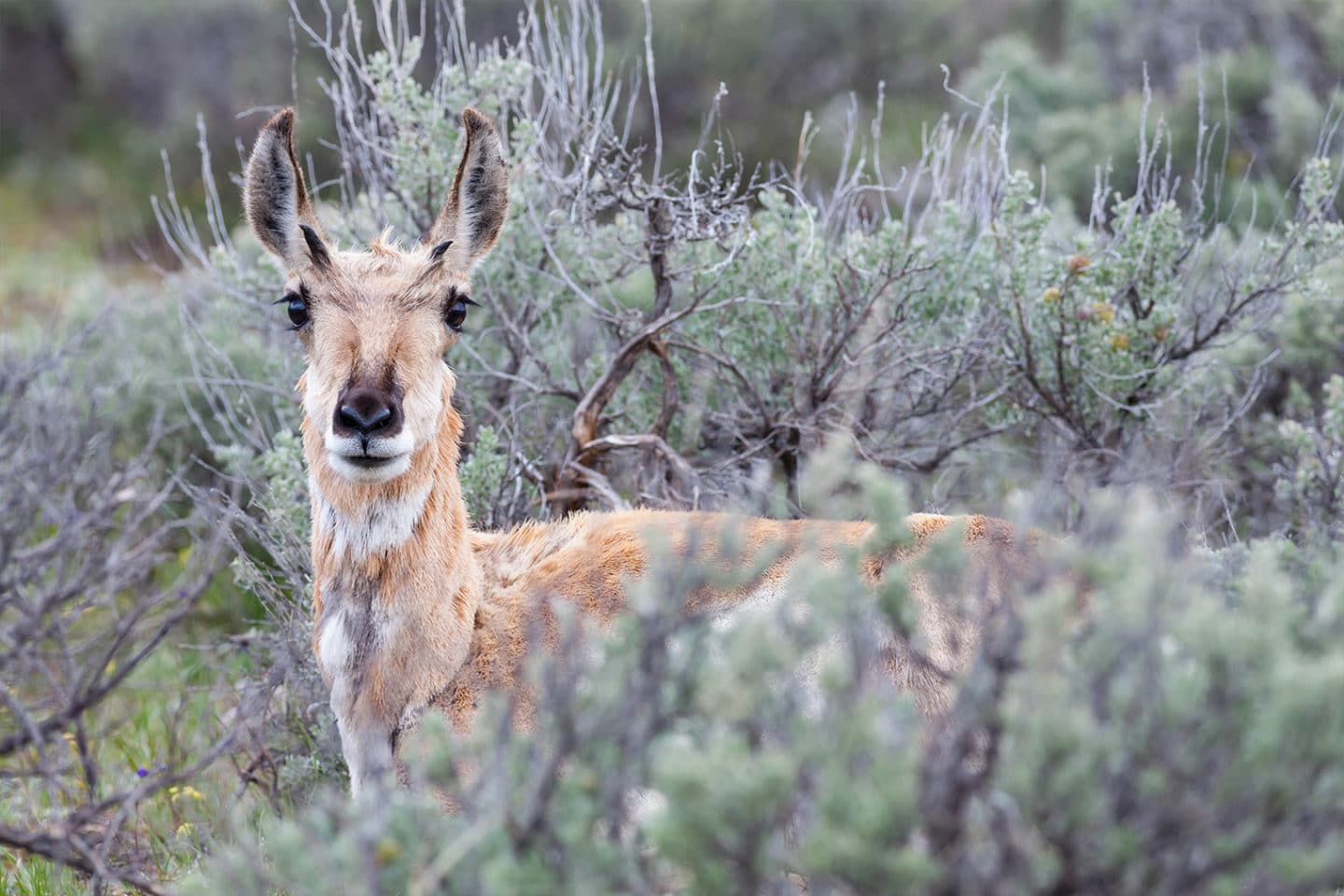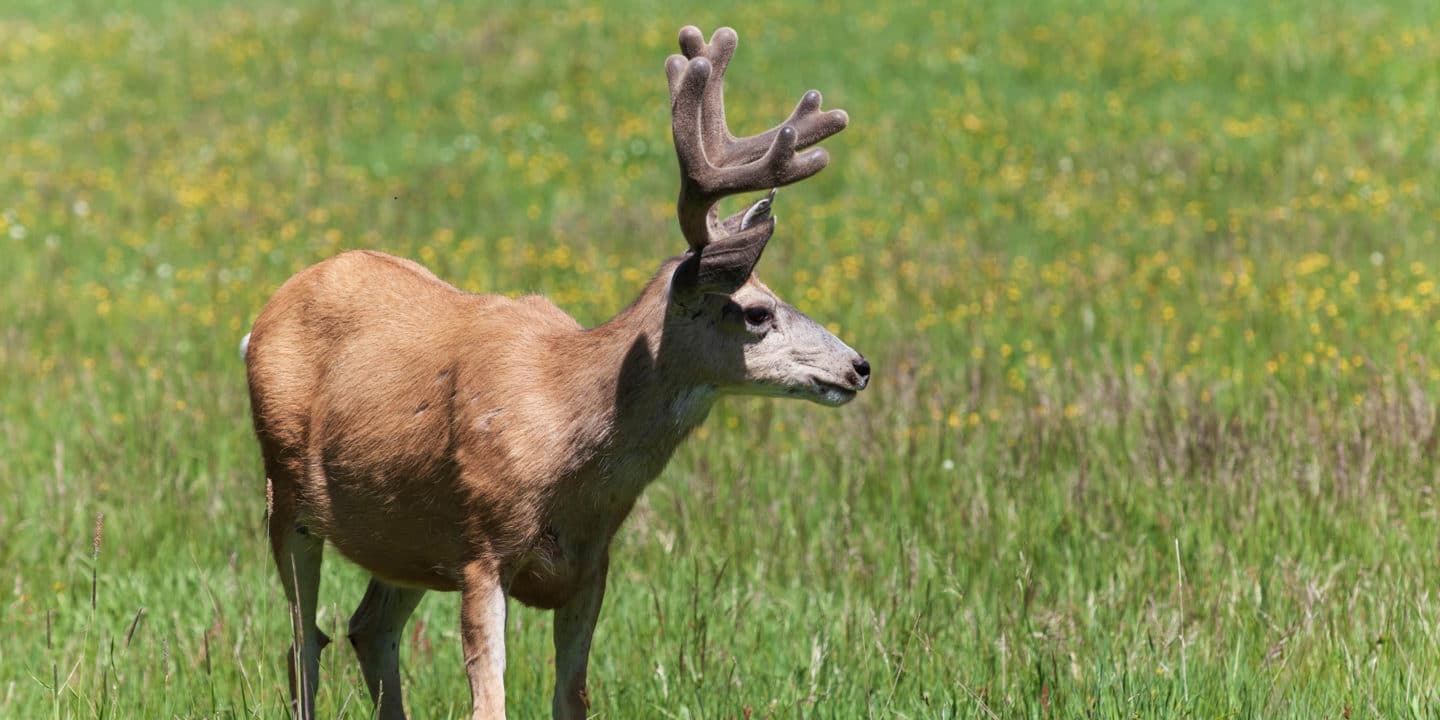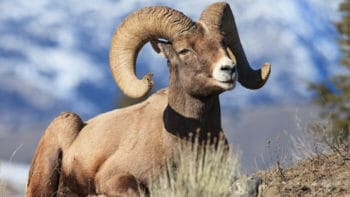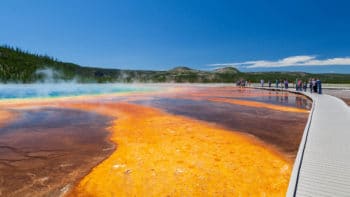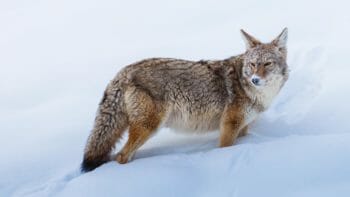When on tour in Yellowstone National Park, there are countless things to see and take in with your own two eyes. The scenery is Rocky Mountain grandeur, with elevated snow-spotted peaks reaching high above wide grass-swept valleys, as well as thick green forests and opalescent alpine lakes. Within this wilderness are many habitats and havens for wildlife ranging from small mammals like weasels, badgers, marmots and pikas, to huge ungulates like elk, bison and moose, and oft-sought elusive predators like bears and wolves. Sometimes we are fortunate enough to enjoy sightings of these animals in close proximity. However, because they are wild and still maintain a healthy wariness of humans, we almost always have to search for them. This is why we choose to employ the use of high-powered optics such as binoculars and spotting scopes (think telescope – but designed to be pointed at animals and not stars). Optics allow us to keep both ourselves and the animals safe when out in the field while also having minimal impact on wildlife behavior. This equipment gives us a glimpse into true wilderness without disturbing it.
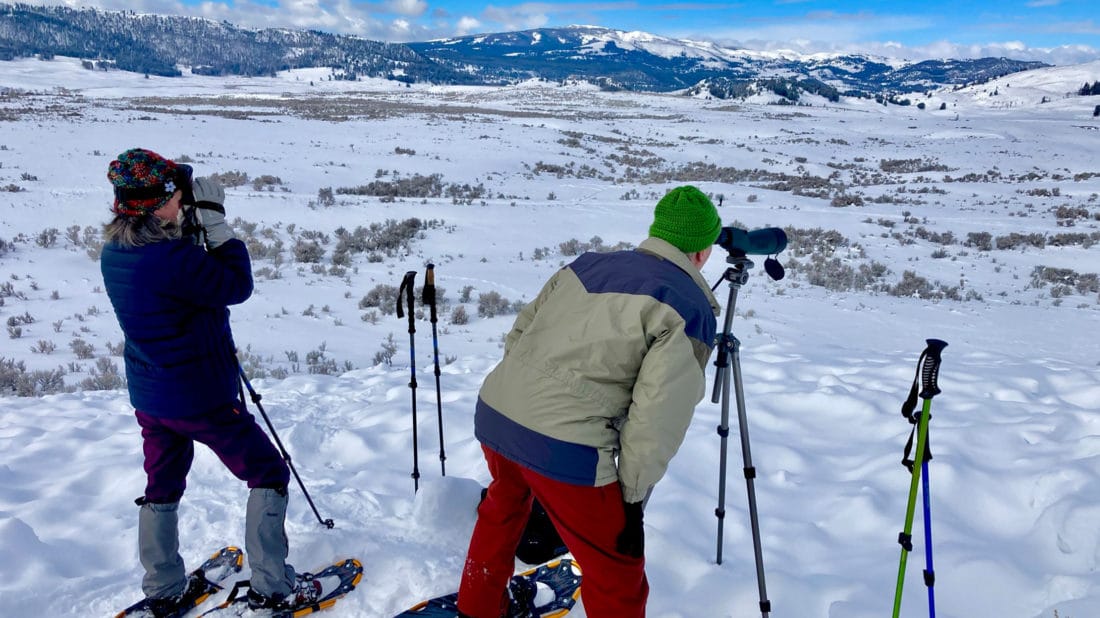
What Optics Do We Use On Tour?
On all of our tours we provide Vortex brand binoculars and spotting scopes. We have equipped our vehicles with enough Crossfire HD 10×42 binoculars and Diamondback HD 20-60×85 spotting scopes so that every guest can take advantage of these incredible tools. We provide one set of binoculars for each guest, and offer training at the beginning of each day in order to maximize their use for each individuals’ eyes and needs. We can work with people who have seeing difficulties, and who wear glasses, as well as young children and older guests. Our guides will spend time making sure everyone’s binoculars are clean and working well for them. Each set is attached with a hearty strap so that guests can carry them around their shoulder or neck for time spent walking or hiking, during our remote picnic lunches, and easily used from within the vehicle.
Our Vortex spotting scopes come in two formats: angled and straight-on. The angled scopes are positioned such that you bend your head down and look into the single eye-piece at whatever the scope is pointed at. These can be easily adjusted for both short and tall customers (children and adults). Our straight scope option is great for anyone with neck and back mobility concerns, as all you have to do is stand straight up and look directly into the eyepiece without having to bend. These can also be adjusted to multiple heights. Both models allow for our guides to find wildlife of interest at a great distance, and point the spotting scope directly at it. The scopes are easily loosened and modified to be either fixed, or fluid so you can follow a moving animal, or watch it in place for a long period of time without having to worry about focus and position. The placement and fixation of the scopes is our guides’ job, and they are extremely efficient at setting it up so that our guests do not miss an amazing animal-viewing experience. In a matter of a few minutes they can have multiple scopes set up on the same point, so everyone can share in the moment together.
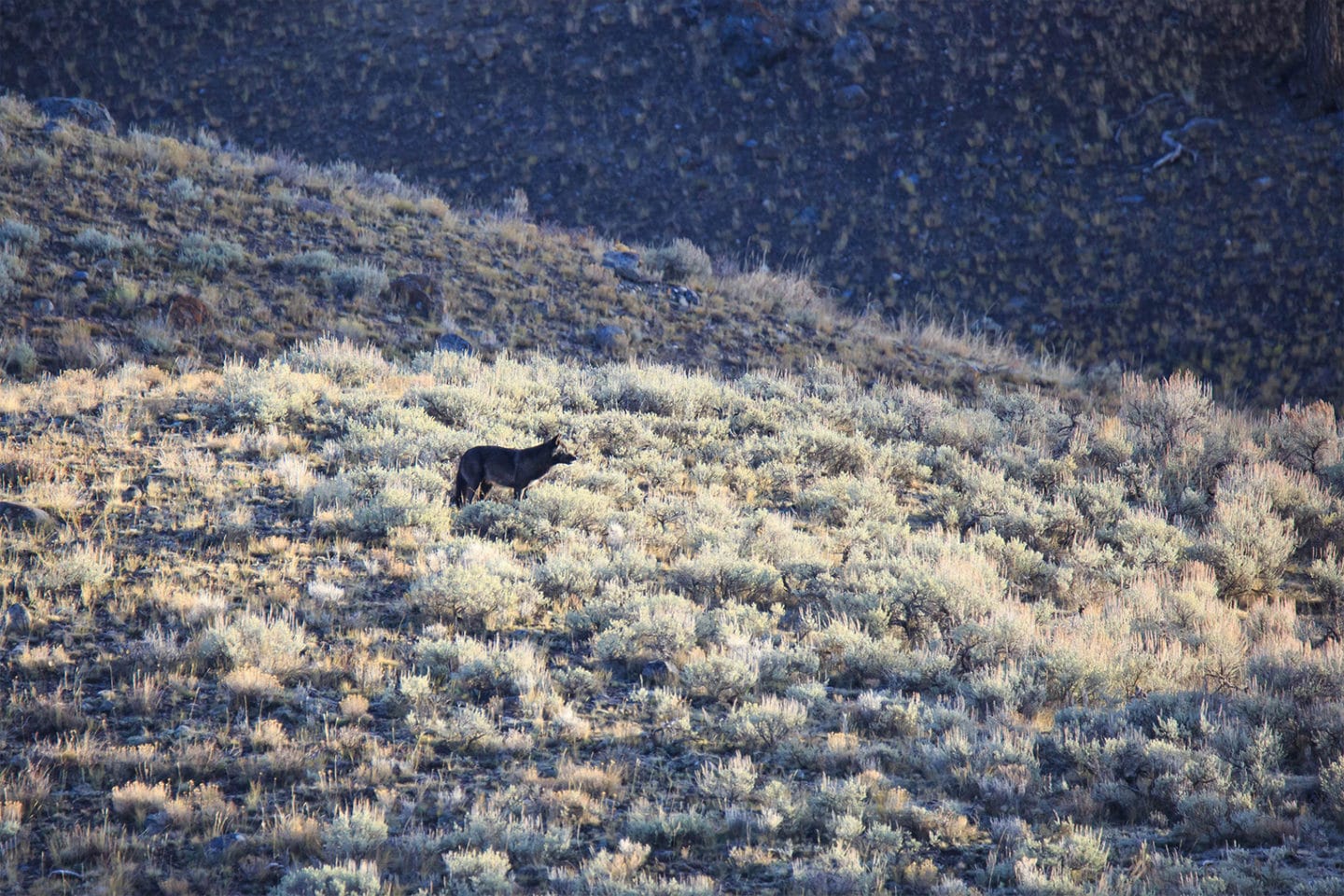
Why Do We Use Vortex Optics?
We use Vortex optics for two main reasons: their clarity and toughness. The most important thing when looking through a scope or set of binoculars is how clear that image appears to our eyes. The constitution of the glass throughout the multiple eye pieces inside and outside of the casing is what helps us get a clear picture. Vortex uses well-sourced and marketable glass, which is both clear and durable and sustainable. We use our equipment every single day in the field, so having it hold up to lots of use is also critical. Vortex binoculars and scopes are both covered in an extremely durable shell, with components that cover the eye-pieces when not in used. They have withstood falls into water, dirt, sagebrush, down hills and off trucks, and have still been usable. If a part we cannot maintain in house is broken, Vortex offers free and speedy turnaround for repair under their life-time warranty.
So why these specific binoculars and this model of scope? To keep it brief, this comes down to zoom power and lighting. When scanning large areas of land for wildlife such as high alpine meadows we find that 10×42 binoculars are a great fit. The “10” in this case refers to a 10x magnification and the “42” refers to the size of the outer lens and how much light it can let in. In many cases we will break out the spotting scopes for a closer look as they have a zoom magnification of 20-60. They also have larger glass elements that allow us to see better in low light situations such as the early morning when wildlife is most active. In utilizing our binoculars with a wide field of view and our spotting scopes with a high powered zoom, we are able to have an incredible multi-layered look at wildlife and the landscape.
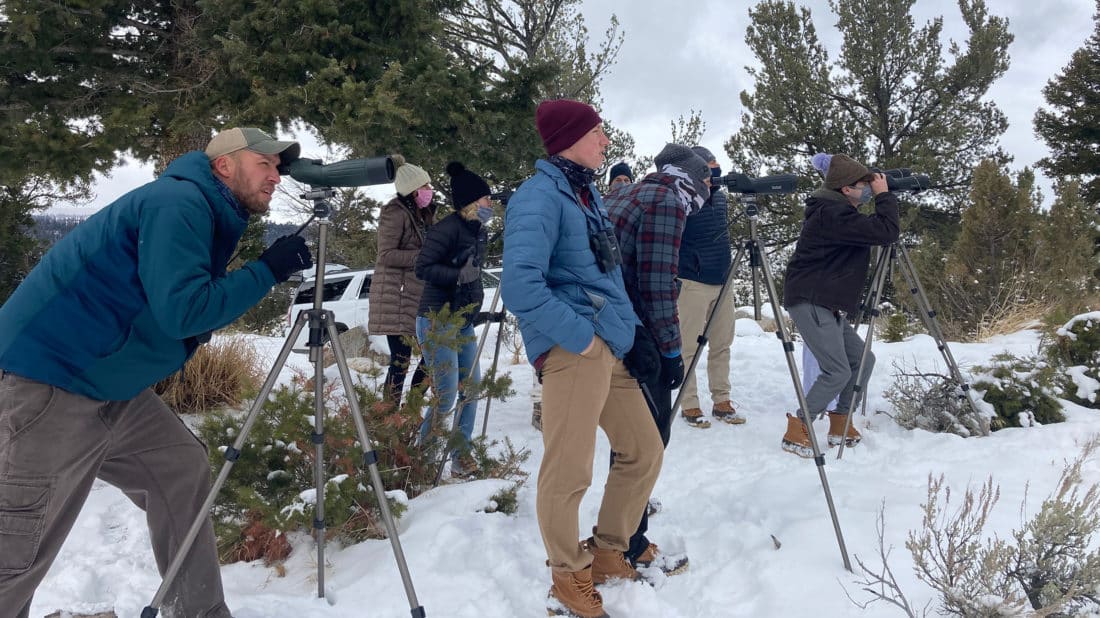
How Do We Use Optics In The Field?
When we are out in the field, different scenarios call for different optics to be used. The go-to-tool for every guide is binoculars. I always say that I use binoculars to find the wildlife and I use the scopes to watch them.
Binoculars allow us to scan larger areas efficiently and react quicker to a changing situation. As mentioned above, the scopes allow us to get a closer look while also having the benefit of being stabilized on a tripod. This means if something is hard to spot, your guide can ensure you are looking exactly where you need to. Scopes are also preferred by many guests with shaky hands, including young kids. This is one of the reasons we bring along multiple scopes, and we usually set them up at different eye levels for a more comfortable viewing.
Another common advantage of scopes is to take pictures. It is possible to take pictures using a phone positioned through the spotting scope so you can capture a moment without having to use a large camera lens. In order to provide a great shot or even video through the scope in this way, all of our Yellowstone Safari guides own a PhoneSkope attachment, which is specific to their brand of cellphone. They can easily place this equipment onto one of the spotting scopes being used and take multiple clear photos and videos for our clients, which the guides will share with them at the end of their day. This also allows for guests who may not be professional photographers to watch wildlife without worrying about getting the best picture possible.
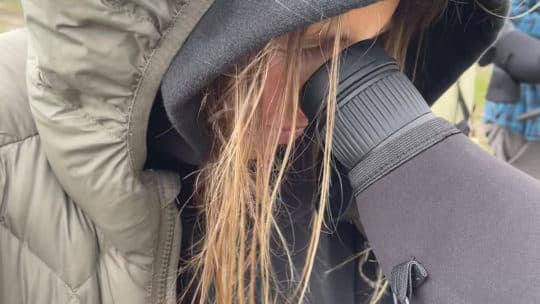
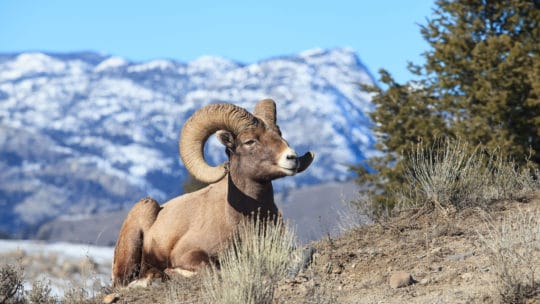
Optics increase our visible range as we scan thousands of acres of land for wildlife. With them, we amplify our experience both visually and holistically. We can see wildlife undisturbed by human presence and can capture this moment as a memory and in photo and video for future enjoyment. Our optics are an invaluable tool on every one of our wildlife safaris.
